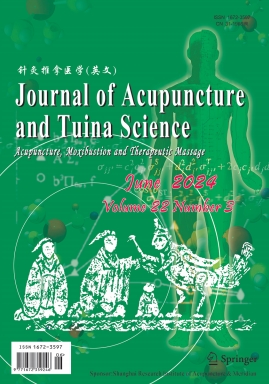
针灸推拿医学(英文版)(Journal of Acupuncture and Tuina Science) 万方知网目次维普目次
- CSCD
- 科核
- 主管单位:
上海市卫生健康委员会
- 主办单位:
上海市针灸经络研究所
- 国际刊号:
1672-3597
- 国内刊号:
31-1908/R
- 学科分类:
- 字数:
4000-16000
- 有无基金:
/有基金 100.0%
- 周期:
CN外文-双月刊
- 特殊属性:
第一批认定学术期刊,外文期刊
- 电话:
021-64382181(202403期)
- 邮箱:
zjtnyx@126.com(202403期)
- 复合因子:
0.681
- 综合因子:
0.467
- 收录:
万方,知网目次,维普目次
- 级别:
CSCD,科核
期刊简介
《针灸推拿医学》期刊已被查看: 次
更新频次
高频栏目:
Basic Study-100%-期平均发文量3篇
Special Topic for 973 Program-83.3%-期平均发文量1篇
Clinical Study-100%-期平均发文量4篇
Others-100%-期平均发文量1篇
中频栏目:
Famous Doctor’s Experience-50.0%-期平均发文量1篇
Literature Study-50.0%-期平均发文量1篇
Special Topic Study-66.7%-期平均发文量3篇
低频栏目:
Systematic Review-16.7%-期平均发文量1篇
单位占比
其他-100.0%一作占比
/有基金-100.0%投稿指南
1、投稿方式:在线投稿。
2、刊内网址:(202403期)
http://116.228.206.14:4999/journalx_jatsen
(英文投稿页面)
http://116.228.206.14:4999/journalx_jats
(中文投稿页面)
https://link.springer.com/journal/11726
3、官网网址:http://www.acumoxj.com/
http://www.acumoxj.com/tuinayixue/home.html
4、刊内邮箱:zjtnyx@126.com
5、刊内电话:021-64382181
6、出刊日期:双月刊,逢双月25日出版。
2024年7月9日星期二
《针灸推拿医学(英文版)》征稿启事
【《上海针灸杂志》2024年05期信息】
Journal of Acupuncture and Tuina Science(《针灸推拿医学》), CN 31-1908/R, ISSN 1672-3597, 双月刊,66页)为中国科技核心期刊(中国科技论文统计源期刊),为中国科学引文数据库(CSCD)(核心库)、科睿唯安 Emerging Sources Citation Index (ESCI)、德国 Springer Nature、WHO西太区医学索引(WPRIM)、SCOPUS 等数据库收录期刊。
本刊以介绍针灸和推拿临床医学,推广中医针灸和推拿文化,促进国际交流为主旨。设有述评、名医经验、临床研究、基础(实验)研究、经络腧穴、针刺麻醉、针灸器械等栏目。全面报道国内外针灸、推拿的临床和基础研究成果。
论文强调具有中医特色,突出中医基础理论的实际运用。
本杂志电子版文章可从 Springer数据库(https://link.springer.com/journal/volumesAndIssues/11726)及本刊
官网(http://www.acumoxj.com/tuinayixue/qkbrowse.html)全文浏览或下载,欢迎访问,批评指正。
本刊承诺
1. 缩短登记和审稿时间,收到稿件约 30天通知作者录用与否,稿件退修后约10个月发表。
2. 编辑部自行排版,缩短出版周期。
3. 优秀论文提供 Springer的在线优先出版(Online First)和开放获取(Open Access)服务。
4. 稿件实行优稿优酬,发表后向作者支付稿酬。
为提高本刊的英文质量,编辑部接受中文投稿,将组织专业人员翻译,免收翻译费!
在线投稿网址:http://www.acumoxj.com/tuinayixue/onlinesub.html
或直接登录 http://116.228.206.14:4999/journalx_jatsen (English version)
http://116.228.206.14:4999/journalx_jats(中文界面)
联系电话:021-64382181 电子邮件:zjtnyx@126.com
《针灸推拿医学(英文版)》投稿须知
Instructions for Authors
【2024年03期信息】
Journal of Acupuncture and Tuina Science
Instructions for Authors
Editors-in-Chief
CHEN Hanping, WU Huangan
The Journal of Acupuncture and Tuina Science, a peerreview journal with an international scope (ISSN 1672-3597, CN 31-1908/R, Bimonthly), is indexed in Emerging Sources Citation Index (ESCI), Western Pacific Region Index Medicus (WPRIM), Springer-Verlag GmbH Database, Index of Copernicus (IC), Chinese Science Citation Database (CSCD), and Chinese Scientific and Technical Papers and Citations Database (CSTPCD). You can search the text on https://link.springer.com/journal/11726.
MANUSCRIPT INFORMATION
Scope of contributions
Journal of Acupuncture and Tuina Science welcomes manuscripts from all over the world, on all aspects of acupuncture, moxibustion, and Tuina (Chinese therapeutic massage). Article types include basic studies, clinical studies, reviews, systematic reviews, randomized controlled and pragmatic trials, famous doctor’s experiences, etc.
Submission
Manuscripts should be submitted online via the online submission and peer review website of the journal [http://116.228.206.14:4999/journalx_jatsen/Login.action (English)
or http://116.228.206.14:4999/journalx_jats/Login.action (Chinese)].
Only online submissions are accepted for rapid publication.
The submitting author takes responsibility for the paper during submission and peer review.
Previous publication submission
If a submission could be considered redundant or duplicative of a previously published work, a full statement of such should be made to the editor. If a duplicate publication is attempted without such notification, editorial action may be taken, including prompt manuscript rejection. Any subjects discussed in the submitted manuscript mentioned in another publication should be noted, with a reference to the previous work. If manuscripts are under consideration by another publication, copies of possibly duplicative materials being considered elsewhere must be provided at the time of manuscript submission.
Copyright
Once the material is published in the journal, it becomes the copyrighted property of Shanghai Research Institute of Acupuncture and Meridian. Permission must be attained from the editorial board to publish in other medical journals.
AUTHOR INFORMATION
Biographical and contact information (including address, phone and fax numbers, e-mail address, and working place) for all authors must be initially provided.
Authorship and group authorship
An author should be someone who has made substantive intellectual contributions to a published study, and biomedical authorship continues to have important academic, social, and financial implications. Each author should have participated sufficiently in the work to take public responsibility for appropriate portions of the content. One or more authors should be responsible for the integrity of the work as a whole from inception to publishing.
Authorship credit should be based on: (1) substantial contributions to conception and design, or acquisition of data, or analysis and interpretation of data; (2) drafting the article or revising it critically for important intellectual content; and (3) final approval of the version to be published. (1), (2), and (3) must all be met.
If the authorship of multicenter trials is attributed to a group, all group members named as authors should fully meet the above criteria for authorship. The group should jointly make decisions about the corresponding author before submitting the manuscript for publication, and the other group members may be listed in an acknowledgment in which their function or contribution should be described. The correspondence author should be prepared to explain the presence and order of these individuals. It is not the role of editors to make authorship decisions or to arbitrate conflicts related to authorship.
Conflicts of interest
When authors submit a manuscript, they are responsible for disclosing all financial and personal relationships that might bias their work and undermine the credibility of the journal, the authors, and science itself. To prevent ambiguity, authors must state explicitly whether potential conflicts exist in the manuscript on a conflict-of-interest notification page that follows the title page, providing additional detail, if necessary, in a cover letter that accompanies the manuscript. Editors may use information disclosed in conflict-of-interest and financialinterest statements as a basis for editorial decisions. Editors should publish this information if they believe it is important in judging the manuscript. It should be declared in conflict-ofinterest if the author is a member of the editorial board or editor of the Journal of Acupuncture and Tuina Science.
Informed consent
Before experimenting on human subjects, authors should obtain the statement of informed consent from the study participants.
The study participants have a right to privacy that should not be violated without informed consent. Identifying information, including names, initials, or hospital numbers, should not be published in written descriptions, photographs, or pedigrees unless the information is essential for scientific purposes and the patient (or parent or guardian) gives written informed consent for publication. Nonessential identifying details should be omitted. When informed consent has been obtained, it will be indicated in the published article.
Ethical requirement
When reporting experiments on human subjects, authors should indicate whether the procedures followed were in accordance with the Helsinki Declaration. If doubt exists whether the research was conducted in accordance with the Helsinki Declaration, the authors must explain the rationale for their approach and demonstrate that the institutional review body explicitly approved the doubtful aspects of the study.
When reporting experiments on animals, authors should indicate whether the institutional and national guide for the care and use of laboratory animals was followed. Authors should include the following statements in a separate section entitled ‘Compliance with Ethical Standards’ when submitting a paper.
Consent to participate policy
For all research involving human subjects, informed consent to participate in the study should be obtained from participants (or their parents or legal guardian in the case of children under 16) and a statement to this effect should appear in the manuscript. For manuscript reporting studies involving vulnerable groups (for example, unconscious patients) with the potential for coercion (for example, prisoners) or where consent may not have been fully informed, manuscripts will be considered at the editor’s discretion. In the case of articles describing human transplantation studies, authors must include a statement declaring that no organs/tissues were obtained from prisoners and must also name the institution(s)/clinic(s)/department(s) via which organs/tissues were obtained.
The corresponding author should be prepared to collect documentation of compliance with ethical standards and send it if requested during peer review or after publication.
The editors reserve the right to reject manuscripts that do not comply with the above-mentioned guidelines. The author will be held responsible for false statements or failure to fulfill the above-mentioned guidelines.
EDITORIAL REVIEW AND PUBLICATION
Peer review
Editor reviews submitted manuscripts initially. Manuscripts with insufficient priority for publication are rejected promptly. Other manuscripts are sent to expert consultants for peer review. All the reviewers’ identities and the authors’ identities are kept anonymous from each other. The manuscript under review is not revealed to anyone other than peer reviewers and editorial staff. We encourage authors to suggest the names of possible reviewers, but we reserve the right to final selection. Reviewers are required to evaluate the manuscript and to return comments within two weeks.
Rejected manuscripts
Rejected manuscripts will not be returned to authors unless specifically requested.
Editing
Accepted manuscripts are copyedited by our editor according to our style (including tables and illustrations) and then by our translator or another reviewer whose native tongue is English to correct syntax error and returned to the author for approval. Authors are responsible for all statements made in their work, including changes made by the editor and authorized by the corresponding author.
Publication
Authors are required to pay a publication fee if their manuscripts are accepted for publication (unsolicited manuscripts).
MANUSCRIPT PREPARATION
According to the study type, the manuscripts should be prepared in accordance with the Uniform Requirements for Manuscripts Submitted to Biomedical Journals by ICMJE (www.icmje.org), Standard Protocol Items: Recommendations for Interventional Trials (SPIRIT, https://www.spiritstatement.org/), Consolidated Standards of Reporting Trials (CONSORT, http://www.consort-statement.org), Preferred Reporting Items for Systematic Reviews and Meta-analyses (PRISMA, http://www.prisma-statement.org), or Case Report Guidelines (CARE, https://www.care-statement.org), respectively.
Title page
The title page should include the article title, names and affiliations of all authors, and correspondence biographical information on all authors. If an author’s affiliation has changed since the work was done, list the new affiliation as well. Titles should be concise and descriptive. The name, address, telephone number, fax number, and e-mail address of the corresponding author should be addressed. Any grant support should be mentioned on this page.
Abstract and keywords
Provide an abstract of no more than 400 words. Include information as applicable for the following headings: objective, methods, results, and conclusion.
Underneath the abstract, provide 5-8 keywords (preferably Medical Subject Heading terms, MeSH).
Text
Introduction: Provide a brief background for the article, including the rationale for the study or observation.
Methods: Describe the selection of subjects, including demographics and study design. Identify the procedures in sufficient detail so others may replicate the results. Provide references to established methods and new techniques; provide the rationale for their use and describe their limitations.
Authors submitting review articles should describe the methods used to locate, select, extract, and synthesize data.
Statistics: As necessary, describe statistical methods and provide appropriate indicators of error or uncertainty. Specify any statistical software used.
Results: Present results in a logical sequence.
Conclusion: Emphasize important and new findings of the study. Include implications of the findings and their limitations.
Discussion: The discussion should focus on the interpretation and significance of the findings with concise and objective comments that describe their relation to other work in the area. It should not repeat information in part of the results.
Figure
Give each figure a caption. For color figures, the resolution should be 300 dpi. For black and white figures, the resolution should be 500 dpi.
Nomenclature and abbreviations
Authors must conform to the WHO International Standard Terminologies on Traditional Chinese Medicine (2022). The full term should appear at first mention, followed by the abbreviation in parentheses. Standard units of measure are acceptable to abbreviate without expansion. When discussing special products, it is preferable to use the nonproprietary (generic) name or descriptive term throughout. If desired, the brand name can be included parenthetically at first mention.
Chinese herbs should be in the Chinese phonetic alphabet, followed by the Latin name in parentheses. The title of a book should be spelled in the Chinese phonetic alphabet, followed by the English name in parentheses.
References
References should be more than 20 and numbered consecutively in the text; present citations in numerical order to correspond with the text.
CONTACT
Address: No.650, South Wanping Road, Shanghai 200030, China
Phone (Fax): 0086-021-64382181
E-mail: zjtnyx@126.com
http://116.228.206.14:4999/journalx_jatsen/Login.action (English)
http://116.228.206.14:4999/journalx_jats/Login.action (Chinese)
《针灸推拿医学》同类中国医学期刊
-
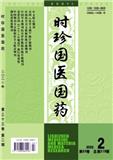
时珍国医国药
北核,CSCD扩,武A-,高T2
CN中文-月刊影响因子1.462
-

中华中医药杂志(原:中国医药学报)
北核,CSCD,科核,武A,高T1
CN中文-月刊影响因子2.346
-

中药材
北核,科核,武A-
CN中文-月刊影响因子1.748
-

中医杂志
北核,CSCD,科核,武A,高T1
CN中文-半月刊影响因子4.487
-

中华中医药学刊
北核,科核,武A,高T1
CN中文-月刊影响因子2.975
-
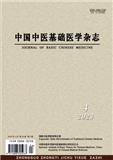
中国中医基础医学杂志
科核,CSCD扩,高T2,武B+
CN中文-月刊影响因子1.824
-
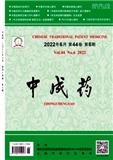
中成药
北核,CSCD,科核,武A,高T2
CN中文-月刊影响因子2.225
-
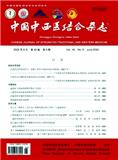
中国中西医结合杂志
北核,CSCD,科核,武A+,高T1
CN中文-月刊影响因子2.683
常见问题
-
针灸推拿医学杂志社官网、联系方式是什么?
针灸推拿医学杂志社官网:http://www.acumoxj.com/tuinayixue/home.html
投稿网址:http://116.228.206.14:4999/journalx_jats联系电话:021-64382181(202403期)
投稿邮箱:zjtnyx@126.com(202403期) -
针灸推拿医学杂志是核心期刊么?
针灸推拿医学是核心期刊,级别是:CSCD,科核, 是:中国医学分类下的万方,知网目次,维普目次收录的期刊。
-
请问你们是针灸推拿医学杂志社吗?
我们不是《针灸推拿医学》杂志社。本站主要从事期刊信息展示与期刊推荐,不是任何杂志官网,直投稿件请联系杂志社。本站仅提供免费的学术指导、论文辅导、期刊投稿信息整理收集服务。
-
你们指导服务后可以保证文章被发表吗?
期刊发表的成功与否,主要取决于文章内容的质量。编辑老师会根据研究领域、创新性等多因素进行考量。我们会帮助您理解期刊的发表要求,助力提升发表几率,从而增加发表的机会。
-
晋级论文能否在报纸上发表?
在学术界,论文的发表往往被视为研究者职业发展的重要一环。晋级论文,即为了获得更高职称或学术地位而撰写的学术论文,通常需在专业期刊上发表。然而,许多人可能会问
